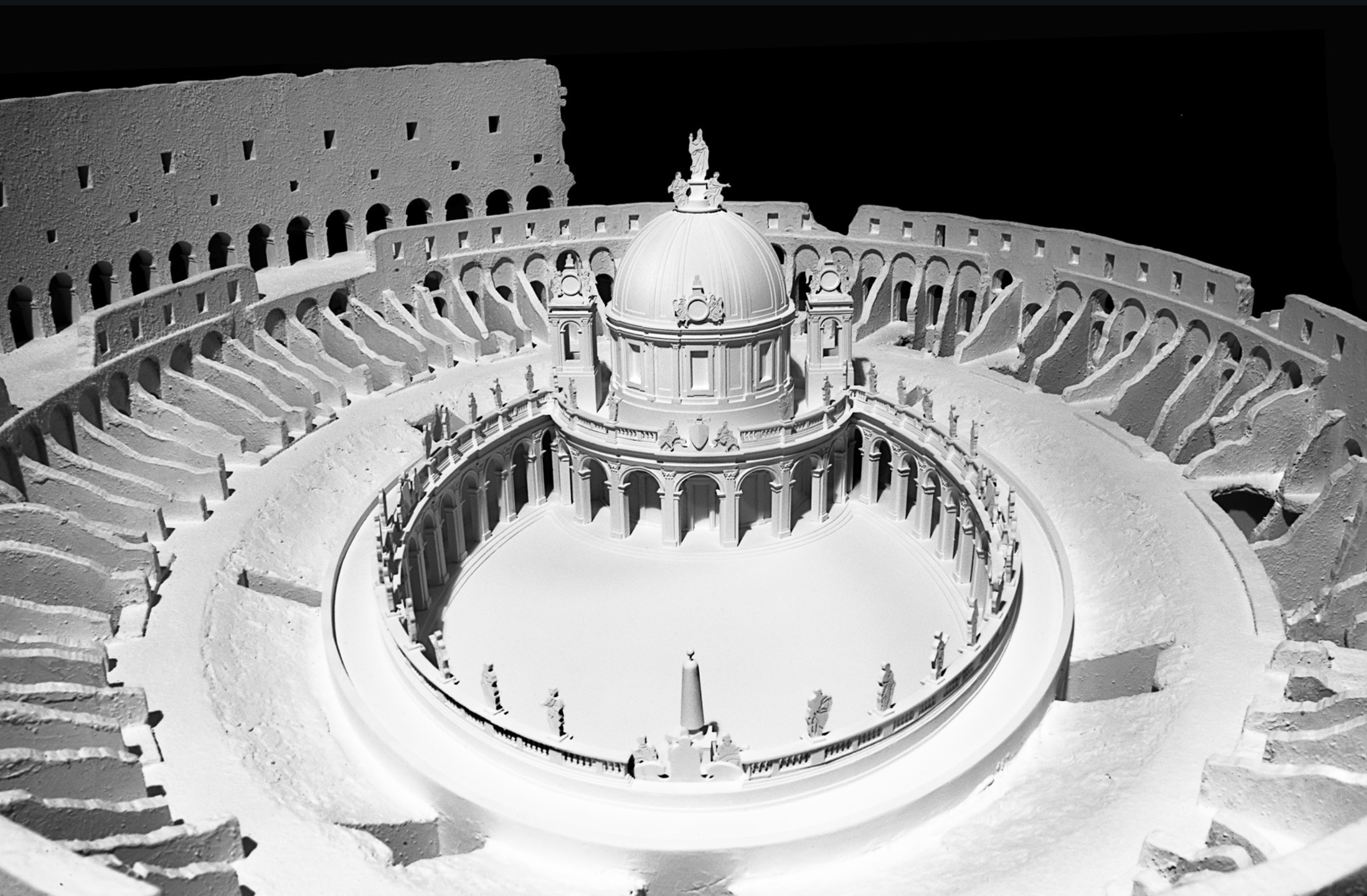
THE COLOSSEUM, UNUSUAL PROJECTS AND TRANSFORMATIONS OF AN ETERNAL ICON
The Colosseum, an Italian and Roman symbol which has lived a thousands of life. In particular, it has been objet of Pope’s ambition through centuries, whit unusual projects for this landmark.
The idea of consecrating the Colosseum, already present in the Middle Ages, intensified in the second half of the 16th century, in the context of the Counter-Reformation. Several projects, however, would never see the light of day. Among these, the ambitious vision of Sixtus V stands out, who in 1585 wanted to transform the Colosseum into a wool mill, complete with housing for workers.
In the 17th century, the proposals continued: Gian Lorenzo Bernini, for example, suggested erecting a chapel in the center of the arena. In 1696, Carlo Fontana, his pupil, developed a project for a sanctuary dedicated to Christian martyrs, an imposing central-plan structure with a perimeter portico.
In view of the Jubilee of 1750, Pope Benedict XIV commissioned the architect Paolo Posi to create the fourteen shrines of the Via Crucis, arranged around the Arena. During the Napoleonic occupation, these shrines were removed during the excavations of the Arena Floor. In 1814, based on a project by Camporese, new shrines were built, but in 1874 Pietro Rosa dismantled them to resume the excavations of the Underground Areas.
This journey through papal projects shows us how the Colosseum has been the subject of continuous transformations and attempts at reuse over the centuries. Its conservation, therefore, is the result of a complex history of interventions, ideas, and projects, which have contributed to making it the icon we know today.
Photo Credits: Parco archeologico del Colosseo
